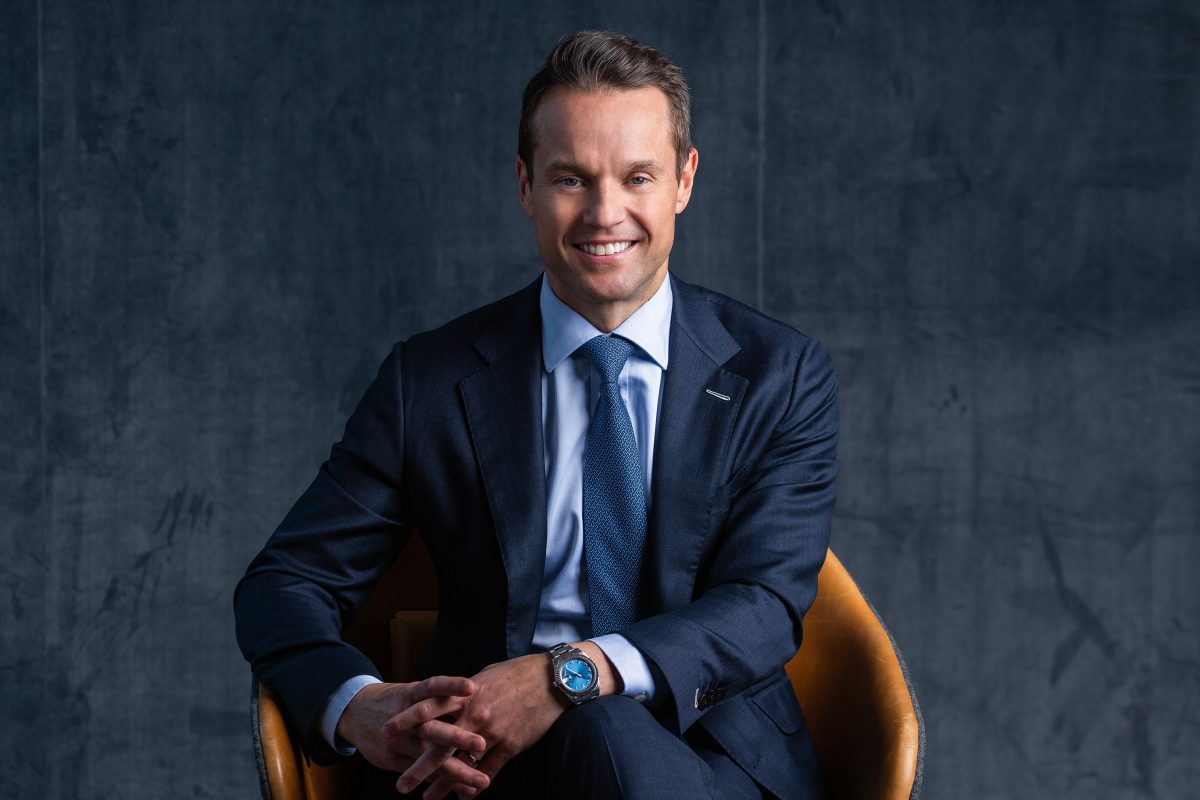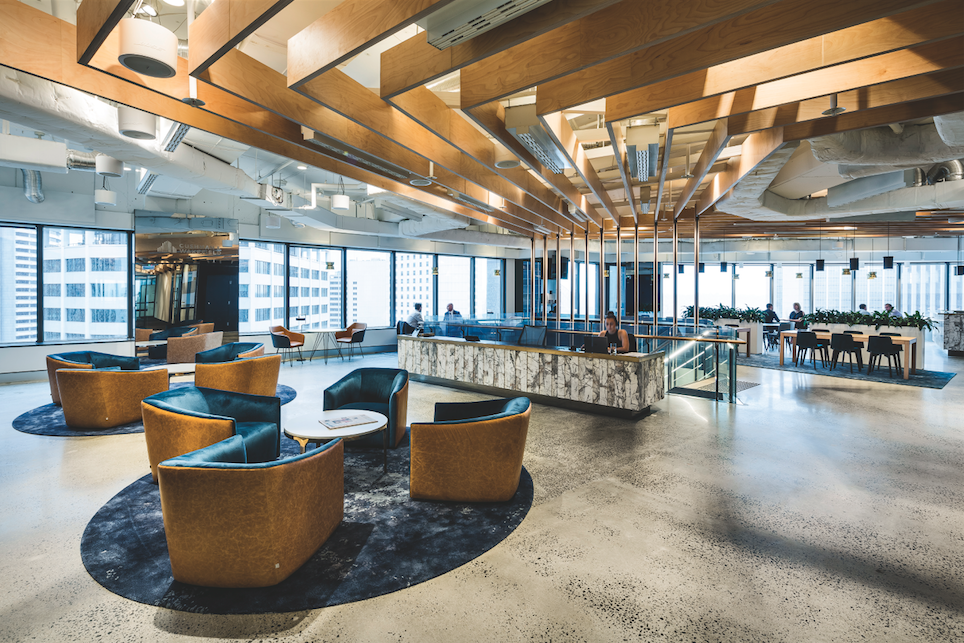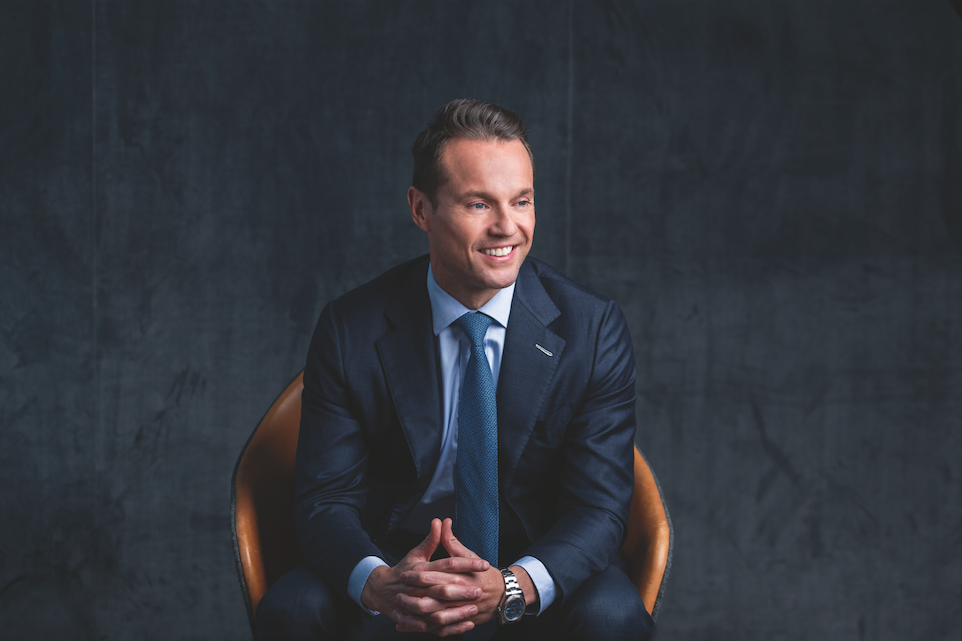Matthew Bouw has just celebrated 10 years with Cushman & Wakefield. And in that decade, he’s witnessed a lot of change, starting with the fact that when he first joined in 2011, the Cushman & Wakefield of today didn’t even exist. He had signed on with UGL, a different iteration of the global real estate services firm.

It’s a story that not many people are aware of, he says, adding with a smile that it has been a “wonderful and exciting journey to be a part of”. Long story short, Cushman & Wakefield as it’s known today is a combination of several different firms that merged in the US from 2014–2015 – an evolution that Matthew has been a part of every step of the way. “I lived in Sydney in 2011 and then moved to Chicago in 2014,” he shares.
“In my four years living in Chicago, we brought all these different companies together to build the Cushman & Wakefield that we know today – a company that is basically a roll up of a myriad of different commercial real estate firms.” Since then, Cushman & Wakefield has completed a hefty 28 acquisitions. Globally, the company boasts 50,000 team members spread across 60 countries. And even during the year of the pandemic, its revenue came in at an impressive US$7.8 billion (A$10.7 billion).
Good parts only
In 2015, after the merging of companies and the formation of Cushman & Wakefield, the firm had to find its identity. So much change had occurred that it was vital to hunker down and formulate a new plan for the future success of the global powerhouse. “We asked, ‘What does a world-class professional services firm look like?” Matthew recalls.
One of the biggest and most exciting opportunities for the company is to accelerate the growth of our business in Asia-Pacific by leveraging what is the fastest-growing region in the world.
“So, we did our research, noticing how other firms, like those that we aspired to be, operated. We found they had both a consistent infrastructure and go-to-market strategy. They were ubiquitous, having the same look in all the markets where they operated, and they all had a very strong technology backbone and world-class people in every part of their business.
“What we did is we took all the good parts from all those companies, added a heavy investment in technology, and built Cushman & Wakefield from that, creating what we call an end-to-end full service global commercial real estate firm.” At that time, this was something rather unique. “There were only two other firms that were truly global then, and now there are three,” Matthew says.

“Back then, we wanted to be the third global player in the market. The real estate market had only just become global, and for us, that globalisation was where we saw opportunity.”
Turbocharged growth
While Melbourne is Matthew’s home base, his penchant for travel has made him something of a citizen of the world. He spent just over a decade outside of his hometown, living in Kuala Lumpur, Dubai, Chicago and Sydney. “I also spent a couple of months in London,” he recalls.
“With all of my travels, I can see that one of the biggest and most exciting opportunities for the company is to accelerate the growth of our business in Asia–Pacific by leveraging what is the fastest-growing region in the world.” As the real estate industry was globalising, Matthew saw a chance to really get in there and turbocharge that growth.
“We ended up buying three companies in the Australian market. Then, we went out and hired tonnes of new talent, continuing to build out our platform, our infrastructure and our service lines. We just went deeper and became stronger in the commercial real estate market.

“Not only did that represent a significant opportunity for the business, but it was also a wonderful opportunity for me. It really allowed me to implement all of the skills and the experience I had built during my career.”
Matthew has had an incredibly diverse career, spanning everything from financial services to professional services, engineering to construction and even mining before finally landing in commercial real estate. “I’ve been in commercial real estate now for the past 10 years,” he says.
“So I’ve been able to bring a completely different perspective to Cushman & Wakefield from the different industries I’ve been in, and from working in different cities across the globe, which gave me a good feel for commercial real estate in all the major markets across the world.”
This experience benefited Matthew in December 2017, when he took up the reins for Cushman & Wakefield in Asia-Pacific, where it employs almost 10,000 people across 14 countries, generating in excess of US$1 billion (A$1.35 billion) in revenue annually. “This was my first CEO role,” he says.
People always talk about diversity and inclusion, but we live and breathe it every day.
“And it was exciting for me to come in and bring a different perspective from my range of experiences and areas of expertise. Unlike someone who might have spent their whole career working in commercial real estate, going from a broker to running a business, I feel like I’ve brought an entirely different level of experience to the position.”
A massive opportunity
The Asia–Pacific region has the largest and fastest-growing population in the world. In fact, more than half the world’s population, or roughly 60 per cent, now lives in Asia–Pacific, with 35 per cent in China and India alone. So in terms of Cushman & Wakefield’s future growth, it comes as no great surprise that the company is focusing heavily on this region of the world.
“This region also holds the largest and fastest-growing middle-class,” Matthew points out. “When you think about it, it’s middle-class consumers that really drive economic growth. There are two billion middle-class consumers in Asia-Pacific, making up 54 per cent of the global total. Between now and the end of the decade, that number is predicted to grow to 65 per cent. Asia-Pacific is also the largest region in the world by GDP with China and India to be among the top four economies in the world by 2030.
“That’s why I’m focused on leveraging that information and driving our business deeper into those markets,” he says. “We are very, very large in terms of businesses in China and India. We have 2,000 employees in 22 cities in China. We’ve been there since 1990, and we will continue to invest greatly in technology and people. It’s the same for India.”

All these large and fast-growing economies are translating into commercial real estate activity, which is fantastic news for Cushman & Wakefield. “We’re very fortunate,” Matthew says. “We see huge opportunity for continued investments in these markets and our ability to leverage the economic and demographic tailwinds in those markets where we already have very strong businesses.”
Interestingly, when it comes to the globalisation of the industry, Matthew believes the world is becoming flatter. “It is actually shrinking,” he stresses. “Clients want you to be best in class locally, nationally, regionally and globally across all the different commercial real estate asset classes.”
By doing exactly this, Cushman & Wakefield is able to deliver on its tagline: “We put our clients and our people at the centre of what’s next in the world of real estate.”
Driving creative value
At the heart of Cushman & Wakefield’s business model is the notion that as an ideas company, it is also a people company. And while technology and research play a role in its success, Matthew insists that “our people are the jewel in the crown of our firm”, contributing valuable insights and great ideas.
“I always say you can copy products, you can copy services and you can even copy technology, however, it is really hard to copy culture,” he says.
Our platform sets us apart from the other firms that aren’t truly global. There’s huge value in that.
“For us, culture has been a critical area of focus and a key ingredient of our success as a business. There are a number of different elements to our culture, but if I had to break it all down, I’d say it boils down to three things: high performance, client-focused, and diversity, equity and inclusion.”
To Matthew, high performance is about having the best people. That’s why Cushman & Wakefield invests so extensively in its employees, coaching, training and mentoring them. He is inspired by Virgin boss Sir Richard Branson, highlighting his quote: “Train your people so they can work anywhere, but treat them so they will never want to leave.”
Additionally, by being deeply client-centric, the company can better understand its clients’ needs and priorities, allowing it to provide and “flawlessly execute” the best, tailor-made solutions for them. “We believe in driving creative value for our clients every day, and making it better, faster and cheaper through leadership innovation. We always treat our clients like they’re going to leave us tomorrow. That’s how we bring the best of Cushman & Wakefield to the client every single day.”
Diversity and inclusion are definitely trending buzzwords of the business world. But Matthew says that for Cushman & Wakefield, those two terms truly mean something. “People always talk about diversity and inclusion, but we live and breathe it every day. We are incredibly proud of our record in this area,” he shares.

“We have a broad lens on diversity and inclusion, but we have a particularly strong focus on gender, Indigenous and LGBTIQA+ equality, access, inclusion, mental health and wellbeing. “I believe action is crucially important in this area, more so than rhetoric because people remember you for what you do, not for what you say.”
Walking the talk
While Cushman & Wakefield’s unrelenting commitment to creating an inclusive culture certainly benefits its employees, it also extends to the community through the advocating of industry change and the celebration of the diversity of its people, business and clients.
A firm that certainly ‘walks the talk’, it has several access and inclusion partnerships with other industry change-makers including Vivid Sydney, JobSupport, the Property Council of Australia and even local artist Digby Webster.
Together, they are proudly leading and encouraging others in the property industry to champion workplaces that create opportunity for employees from all walks of life, regardless of ability, gender, ethnicity, sexual orientation, or personal circumstance. “You have to stand for more than revenue and profit,” Matthew says.
“As a firm, we truly believe that, and so we invest very heavily in sustainability, ESG, DE&I – the things that a lot of companies just give some level of lip service to.” Recently, Cushman & Wakefield recruited a new global head of diversity, equity and inclusion who will help it to improve in all areas related to those matters at both a global and local level. As a proud father of girls, Matthew is a big proponent of this mission.
“Accelerating the advancement of women is a huge area for me personally,” he stresses. “I have three daughters myself, and all I want is for them to have an equal playing field. It’s not that I want them to have an unfair advantage, I just don’t want them to be at a disadvantage.”
Aware of his ability to help drive change thanks to his position, Matthew took the opportunity when he became CEO to implement a program called Women’s Integrated Network (WIN) in Asia-Pacific. “It all started in the US, but it has grown rapidly,” he explains.
“We have eight chapters now in Shanghai, Singapore, Seoul, Auckland, Melbourne, Tokyo, Delhi and Bangalore. We have roughly 600 employees, predominantly female, in these chapters, and they focus on training, networking, mentoring, promoting and recruiting females into the organisation. They go on to develop and support them, creating an environment where women are supported to reach their full potential, free of discrimination and bias.”
The fruits of their labour
Matthew might have been with the company for a decade, but for him, the most meaningful part has arguably been his time in the CEO position where he has spearheaded a great deal of change. “I’m most proud of the growth of the business since taking on the role a little over four years ago,” he reflects.
“I took over in 2018, and by 2019, we had already become the second largest commercial real estate firm in Asia-Pacific, with very successful revenue growth. We really saw the fruits of our labour, which was incredibly rewarding.”
When Matthew came in, he changed around the company’s entire operating system, a shift which made it more consistent and adept at providing a world-class service to its clients. “This also meant we were able to provide additional opportunities for our people,” he reflects.
“We did this by transforming the firm, making it more global in its design make-up and also the way it went to market to support our clients.
“We have built a global, full-service integrated platform that’s truly integrated so we’re able to bring the very best of Cushman & Wakefield to our clients in all the different markets across the world and also here locally. Our platform sets us apart from the other firms that aren’t truly global. There’s huge value in that.”


